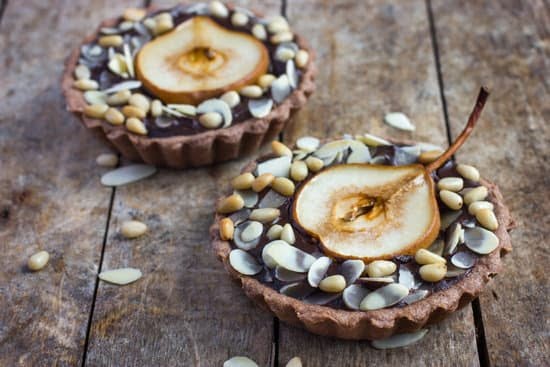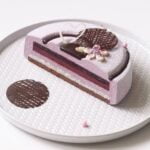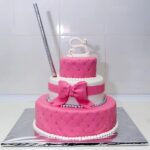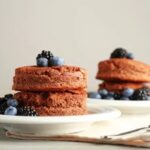Cake decorating is an art form that has captivated people for generations. From intricate designs to whimsical creations, cake enthusiasts have long found joy in transforming a simple dessert into a feast for the eyes. But for those who are new to the world of cake decorating, where should one begin? Enter Tasty 101 Cake Decorating, a comprehensive guide designed to teach beginners the fundamentals of this delicious craft.
What sets Tasty 101 Cake Decorating apart from other tutorials is its emphasis on both aesthetics and taste. While many resources focus solely on creating visually stunning cakes, Tasty 101 recognizes the importance of ensuring that every creation not only looks incredible but also tastes amazing. By providing step-by-step instructions and insider tips, this guide empowers cake enthusiasts to elevate their skills and create cakes that are as flavorful as they are beautiful.
For cake enthusiasts looking to delve into the world of cake decorating or improve their existing skills, Tasty 101 is an invaluable resource. Whether you aspire to create stunning wedding cakes or simply want to impress your friends and family with your baking prowess, this guide will equip you with the knowledge and techniques needed to bring your cake dreams to life.
So dust off your apron, sharpen those icing spatulas, and get ready to embark on a delicious journey through the art of cake decorating with Tasty 101.
The Basics
Cake decorating is a creative art form that allows individuals to transform a plain cake into a work of edible art. To begin your journey into cake decorating, it is important to understand the fundamental techniques that serve as the building blocks for more complex designs. In this section, we will explore some of the basic techniques that are taught in Tasty 101 Cake Decorating.
One essential technique in cake decorating is icing consistency. Different consistencies of icing are required for various decorations, such as spreading a smooth base coat or creating intricate piping details. For example, a stiff consistency is often used for piping flowers and borders, while a thinner consistency is used for filling in larger areas.
Another important technique is leveling and torting the cake. Leveling ensures that the surfaces of your cake layers are flat and even, providing a sturdy base for decorating. Torting involves slicing each layer horizontally to create multiple layers of filling within the cake.
Stacking and crumb coating are techniques used to ensure stability and smoothness in cake decorating. Stacking refers to placing multiple cake layers on top of each other with a layer of frosting in between. This creates a taller structure that can be decorated further. Crumb coating involves applying a thin layer of frosting over the entire cake to seal in any loose crumbs before adding additional layers or decorations.
To keep your decorations precise and neat, piping is an essential skill to master. Piping involves using an icing bag fitted with various tips to create different shapes and designs on the surface of your cake. From simple lines and dots to more intricate flowers or decorative borders, piping can add beautiful details to elevate your cake design.
In summary, mastering the basics of cake decorating techniques lays the foundation for creating stunning works of edible art. Understanding icing consistency, properly leveling and torting cakes, stacking and crumb coating, as well as honing piping skills are integral steps in becoming a proficient cake decorator. These fundamental techniques taught in Tasty 101 provide a solid starting point for beginners and ensure success in more advanced cake decorating endeavors.
Essential Tools and Equipment
Cake decorating requires a variety of tools and equipment to achieve professional-looking results. In this section, we will provide a comprehensive guide to the must-have tools for successful cake decorating with Tasty 101.
One of the most essential tools for cake decorating is a turntable. A turntable allows you to easily spin the cake as you work, ensuring that you can reach all sides and angles effortlessly. It also helps to create smooth and even decorations. Look for a sturdy, non-slip turntable that can accommodate different sizes and weights of cakes.
Another important tool is an offset spatula. This tool has a long, narrow blade that is angled or curved at the end. It is used for spreading frosting, smoothing surfaces, and creating sharp edges on cakes. An offset spatula provides better control and precision compared to a regular spatula or butter knife.
Piping bags and tips are also essential for cake decorating. Piping bags allow you to pipe frosting in various designs and patterns onto your cakes. They come in different materials such as disposable plastic or reusable cloth. Coupled with different types of piping tips, which determine the shape and size of your designs, piping bags allow you to create intricate details on your cakes.
| Tool | Description |
|---|---|
| Turntable | A rotating platform that allows easy access to all sides of the cake |
| Offset Spatula | A long, narrow spatula with an angled or curved blade for spreading frosting |
| Piping Bags | Bags used for piping frosting onto cakes |
| Piping Tips | Attachments for piping bags that determine the shape and size of designs |
These are just a few examples of the essential tools and equipment needed for successful cake decorating. As you progress in Tasty 101 Cake Decorating, you may discover additional tools that suit your personal style and preferences. Remember, investing in high-quality tools will make your cake decorating experience more enjoyable and help you achieve professional-looking results.
Getting Started
For those who are new to cake decorating or looking to improve their skills, Tasty 101 Cake Decorating offers a great starting point. This section will provide step-by-step instructions on how to begin your cake decorating journey with Tasty 101.
- Gather Your Supplies: Before diving into cake decorating, make sure you have all the necessary supplies. These include a turntable, offset spatulas, piping bags and tips, a bench scraper, and an assortment of food coloring gels. It’s also important to have a good quality icing and cake recipe on hand.
- Start with Basic Techniques: To build a strong foundation in cake decorating, start with the basic techniques. Tasty 101 will guide you through piping borders, creating smooth buttercream finishes, and achieving even layers. Understanding these fundamental techniques will set you up for success as you move into more advanced designs.
- Practice on Dummy Cakes: When beginning your cake decorating journey, it can be helpful to practice on dummy cakes before moving on to real ones. Dummy cakes can be made from styrofoam or plastic foam and allow you to experiment without the pressure of messing up a real cake. This is a great way to perfect your skills and gain confidence before working on actual cakes.
By following these step-by-step instructions provided by Tasty 101 Cake Decorating, beginners can feel confident as they embark on their cake decorating journey. Remember that practice makes perfect, so don’t get discouraged if your first attempts don’t turn out exactly as planned. With dedication and patience, you’ll soon be creating beautiful and delicious works of art with Tasty 101 Cake Decorating techniques.
Mastering Tasty 101 Cake Decorating Techniques
Fondant and Gum Paste
One of the advanced techniques taught in Tasty 101 Cake Decorating is working with fondant and gum paste. Fondant is a smooth, pliable icing that can be rolled out and draped over cakes to create a flawless finish. Gum paste, on the other hand, is a firmer substance that is used to create delicate decorations such as flowers and figurines.
To master fondant and gum paste techniques, it is important to start with the basics. Tasty 101 teaches students how to properly roll out fondant and gum paste, ensuring an even thickness for smooth application onto cakes. Students are also guided on how to cover cakes with fondant without any wrinkles or air bubbles.
Additionally, Tasty 101 provides detailed instructions on creating stunning gum paste flowers and other intricate designs. Students learn how to shape individual petals, assemble them into beautiful blossoms, and attach them securely to their cakes. With practice and patience, students can achieve professional-looking cakes adorned with elegant fondant coverings and lifelike gum paste decorations.
Airbrushing Techniques
Another advanced technique covered in Tasty 101 Cake Decorating is airbrushing. This technique involves using an airbrush tool to apply food coloring onto a cake, creating stunning gradients of color and adding depth and dimension.
In Tasty 101, students are introduced to various airbrushing techniques such as shading, highlighting, stenciling, and freehand designs. They learn how to control the flow of color from the airbrush tool to achieve precise results. From creating realistic landscapes to intricate patterns, airbrushing opens up a world of possibilities for cake decorators.
It is essential for students to understand proper maintenance and cleaning of their airbrush equipment in order to prolong its lifespan. Regular practice will help them refine their skills and gain confidence in using this advanced technique.
Stacked and Sculpted Cakes
Tasty 101 Cake Decorating also delves into the art of creating stacked and sculpted cakes. These intricate designs involve constructing multiple tiers or shaping the cake into unique forms, such as animals, vehicles, or objects.
Students are taught how to properly support and dowel stacked cakes to ensure stability. They learn how to carve and shape cakes using various tools and techniques, achieving desired shapes with precision. Tasty 101 also provides guidance on assembling and covering these non-traditional cake designs.
Working with stacked and sculpted cakes requires patience, attention to detail, and a steady hand. Tasty 101 equips students with the knowledge and skills needed to bring their imaginative cake creations to life.
By mastering these advanced techniques taught in Tasty 101 Cake Decorating, aspiring cake decorators can elevate their skills and produce stunning creations that will impress family, friends, or potential clients. Whether it’s working with fondant and gum paste, mastering airbrushing techniques, or tackling stacked and sculpted cakes, Tasty 101 provides comprehensive instruction that empowers students to take their cake decorating skills to the next level.
Troubleshooting Tips
Decorating a cake can be a fun and rewarding experience, but it’s not without its challenges. Whether you’re a beginner or an experienced baker, there are common issues that can arise during the cake decorating process. In this section, we will explore some of these challenges and provide helpful tips on how to troubleshoot and overcome them.
Fondant Cracking or Tearing
One of the most frustrating problems that cake decorators encounter is fondant cracking or tearing. This usually happens when the fondant becomes too dry or is rolled out too thin. To prevent this issue, make sure to knead your fondant until it is soft and pliable before rolling it out. If you find that your fondant is still cracking, try adding a small amount of vegetable shortening to soften it.
If your fondant tears while covering the cake, don’t panic. You can easily fix it by smoothing the torn area with your fingers or using a small paintbrush dipped in water. Gently press the torn edges together and smooth the surface until it blends in with the rest of the cake.
Buttercream Bulging Between Layers
Another common problem faced by decorators is buttercream bulging between layers. This occurs when too much filling or frosting is applied between the cake layers or when the layers are unevenly stacked. To avoid this issue, ensure that each layer of frosting or filling is spread evenly, leaving at least a quarter-inch border around the edges.
If bulging does occur, you can fix it by carefully trimming off any excess filling or frosting with a sharp knife. Apply a thin layer of buttercream around the sides of the cake to seal in any gaps and prevent further bulging. Chilling your cake in the refrigerator for about 30 minutes before adding the final layer of frosting can also help reduce the chances of buttercream bulging.
Color Bleeding in Buttercream
When working with colored buttercream, you may encounter the problem of color bleeding. This happens when the colors spread or mix together instead of staying separate. To prevent this issue, make sure to use gel-based or powdered food coloring instead of liquid coloring, as they have less liquid content.
If you notice color bleeding after applying your buttercream, gently dab away excess moisture with a paper towel. You can also try chilling the cake for a short period to allow the buttercream to set and prevent further bleeding. Additionally, avoid using vibrant or dark colors next to lighter shades to minimize the risk of color bleed.
By being aware of these common challenges and knowing how to troubleshoot them, you can overcome potential obstacles in your cake decorating journey. Remember that practice makes perfect, so don’t be discouraged if you face difficulties along the way. With time and experience, you’ll develop your skills and create beautifully decorated cakes that will impress both yourself and others.
Inspiring Ideas
Tasty 101 Cake Decorating is a course that not only teaches the fundamental techniques of cake decorating, but also encourages creativity and imagination in creating beautiful and unique cake designs. In this section, we will showcase some inspiring ideas that have been achieved through Tasty 101 Cake Decorating.
One popular design that students have learned to create through Tasty 101 is the ombre effect. This technique involves blending two or more colors seamlessly on the cake, creating a gradient effect from light to dark or vice versa.
By using different shades of frosting or food coloring, participants can achieve a stunning and visually striking look. Whether it’s a simple ombre design for a birthday cake or an elaborate multi-layered ombre effect for a wedding cake, Tasty 101 provides the skills and knowledge needed to bring these designs to life.
Another creative idea showcased through Tasty 101 Cake Decorating is the use of edible flowers as decorations. Students learn how to make delicate and realistic flowers out of fondant or gumpaste, which can then be arranged on the cake to add elegance and beauty.
From roses to tulips, daisies to orchids, there are endless possibilities when it comes to incorporating floral designs into cakes. Through Tasty 101, aspiring cake decorators can learn how to create these edible works of art and elevate their cake designs to new heights.
Lastly, Tasty 101 Cake Decorating also explores the world of sculpted cakes. Participants are taught how to carve and shape cakes into three-dimensional objects such as animals, vehicles, or even people. These sculpted creations are sure to impress any crowd, whether it’s a themed birthday party or a special occasion like a baby shower. With guidance from Tasty 101 instructors, students can unleash their creativity by transforming ordinary cakes into extraordinary masterpieces.
These are just a few examples of the many beautiful and creative cake designs that have been achieved through Tasty 101 Cake Decorating. The course not only equips participants with the necessary skills and techniques, but also encourages them to think outside the box and explore their own unique artistic style.
By showcasing these inspiring ideas, Tasty 101 hopes to inspire others to embark on their own cake decorating journey and create delicious works of art that are sure to wow both the eyes and taste buds.
Taking it to the Next Level
Once you have completed Tasty 101 Cake Decorating and have mastered the techniques taught in the course, it’s natural to want to take your skills to the next level. Fortunately, there are plenty of opportunities for advanced learning and improvement in the world of cake decorating. Whether you want to specialize in a specific technique or explore new creative avenues, there are several paths you can take.
One option for advancing your cake decorating skills is to seek out additional courses or workshops. Many culinary schools and community centers offer more advanced classes that focus on specific aspects of cake decorating, such as sugar flowers, fondant sculpting, or creating intricate piping designs. These courses typically provide hands-on instruction from experienced instructors who can help you refine your techniques and introduce you to new artistic approaches.
Another way to continue improving is by participating in cake decorating competitions. These competitions are a great opportunity to showcase your skills and challenge yourself against other talented decorators. Competitions often have different categories based on skill level or specific themes, allowing you to choose a category that suits your abilities and interests. Not only can competitions be an excellent learning experience, but they also provide valuable feedback from judges that can help you identify areas for improvement.
Additionally, joining a cake decorating guild or association can open up even more opportunities for advanced learning. These groups often host workshops with renowned cake artists who share their expertise and teach unique techniques. Being part of a supportive community of fellow enthusiasts can also provide invaluable networking opportunities and access to resources like online forums or mentorship programs.
Taking your skills beyond Tasty 101 Cake Decorating is an exciting journey filled with endless possibilities. Whether you choose to further your education through additional courses, compete in cake decorating competitions, or join a guild for ongoing learning and inspiration, remember that practice is key. With dedication and perseverance, you can continue honing your craft and creating stunning cake designs that you never thought possible.
| Opportunities for Advanced Learning | Description |
|---|---|
| Courses and Workshops | Specialized classes focusing on specific aspects of cake decorating, providing hands-on instruction and guidance from experienced instructors. |
| Cake Decorating Competitions | A chance to showcase skills, challenge oneself, and receive feedback from judges to identify areas for improvement. |
| Cake Decorating Guilds and Associations | Membership in a supportive community where workshops with renowned cake artists are held, providing networking opportunities and access to valuable resources. |
Conclusion
In conclusion, Tasty 101 Cake Decorating is a valuable resource for cake enthusiasts of all skill levels. This article has provided an overview of the various topics covered in Tasty 101, from the basics of cake decorating to advanced techniques and troubleshooting tips. By following the step-by-step instructions and using the essential tools and equipment recommended, readers can embark on their own cake decorating journey with confidence.
Throughout this article, we have seen how Tasty 101 not only teaches the technical aspects of cake decorating but also inspires creativity through showcasing beautiful and innovative cake designs. From elegant wedding cakes to whimsical birthday creations, Tasty 101 encourages readers to think outside the box and explore their artistic abilities.
Furthermore, Tasty 101 is just one stepping stone in a cake decorator’s journey. By taking advantage of opportunities for advanced learning and improvement beyond Tasty 101, such as workshops or additional courses, individuals can continue to expand their skills and techniques. The world of cake decorating is vast and ever-evolving, so there is always something new to learn.
Frequently Asked Questions
How do you make a plain cake look fancy?
To make a plain cake look fancy, there are several techniques you can use. One option is to add texture or patterns to the cake’s surface by using piping bags with different tips. You can create intricate designs or even write messages using buttercream or royal icing.
Another way to elevate the appearance of a plain cake is by adding layers and fillings. By incorporating different flavors and textures between each layer, such as fruit compote, mousse, or ganache, you not only enhance the taste but also create an eye-catching presentation. Additionally, consider garnishing the cake with edible decorations like fresh fruits, chocolate shavings, or edible flowers to give it an elegant touch.
What kind of icing is best for decorating cakes?
When it comes to decorating cakes, the best kind of icing depends on the specific design and desired result you want to achieve. Buttercream icing is a popular choice as it is versatile and easy to work with. It can be used for basic frosting, but also for creating intricate designs through piping techniques.
Fondant icing, made from sugar and gelatin, provides a smooth and polished finish that works well for covering cakes entirely and creating sculpted decorations. Royal icing is another common option, particularly for intricate details like lacework or delicate flowers that need time to dry and harden properly.
What are the 5 kinds of cake decorating?
There are five main types of cake decorating techniques commonly used: piping, fondant modeling, gum paste modeling, hand-painted designs, and stenciling. Piping involves using various shaped piping tips along with buttercream or royal icing to create decorative designs such as borders, rosettes or writing on cakes. Fondant modeling allows for sculpting three-dimensional shapes using rolled fondant; this technique is often used for making figurines or embellishments like flowers or bows that can adorn cakes beautifully. Gum paste modeling shares similarities with fondant modeling but uses a firmer paste made with gum tragacanth or tylose powder to create more intricate and delicate decorations.
Hand-painted designs involve using edible food colorings or paints to create unique patterns, scenes, or motifs directly on the surface of the cake. Finally, stenciling involves using premade or custom-made stencils to add detailed designs on cakes using powdered sugar or food-safe spray paints. Each technique offers its own creative possibilities for bringing cakes to life with amazing decorations.

Welcome to our cake decorating blog! My name is Destiny Flores, and I am the proud owner of a cake decorating business named Cake Karma. Our mission is to provide delicious, beautiful cakes for all occasions. We specialize in creating custom cakes that are tailored specifically to each customer’s individual needs and tastes.





